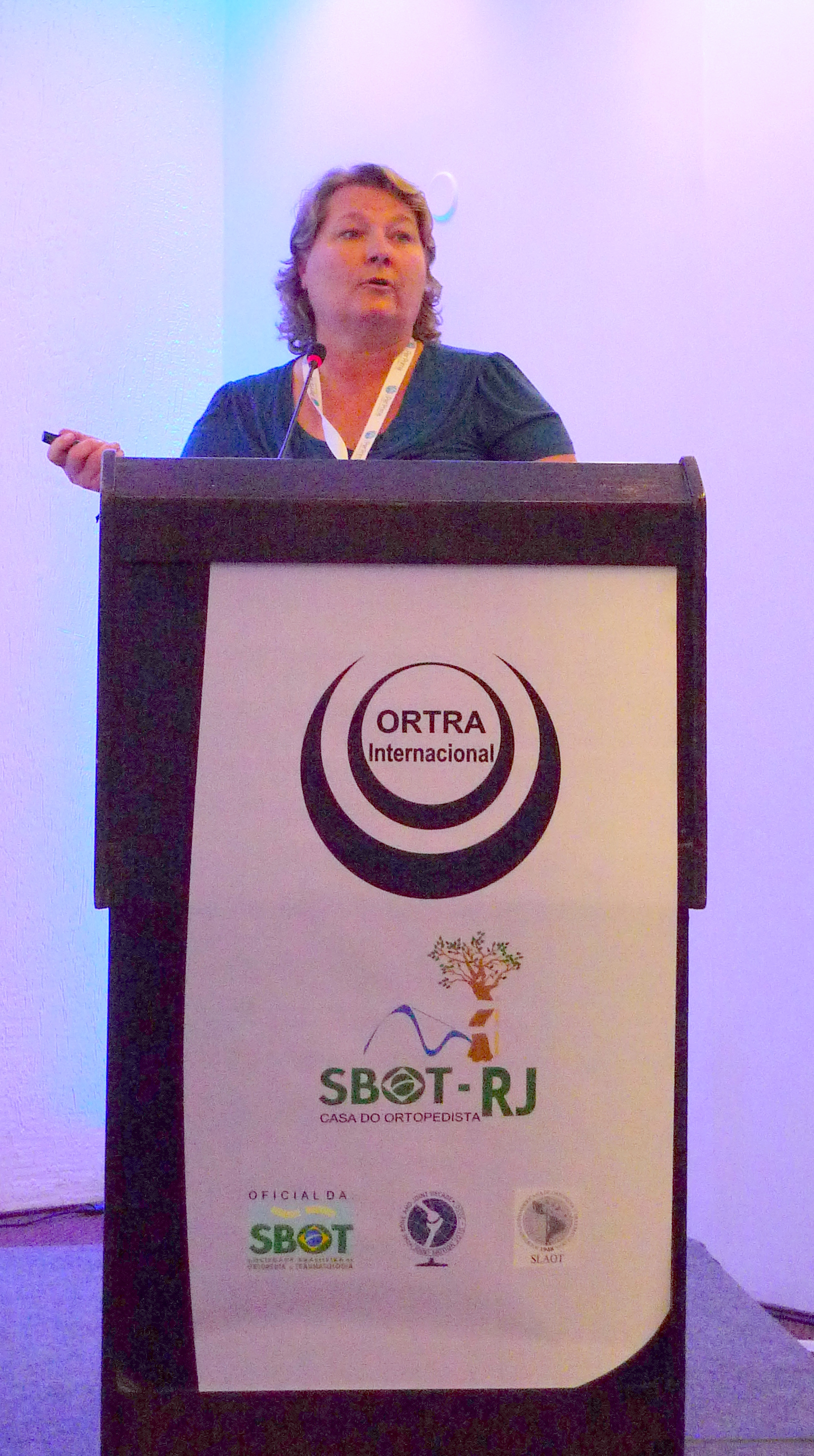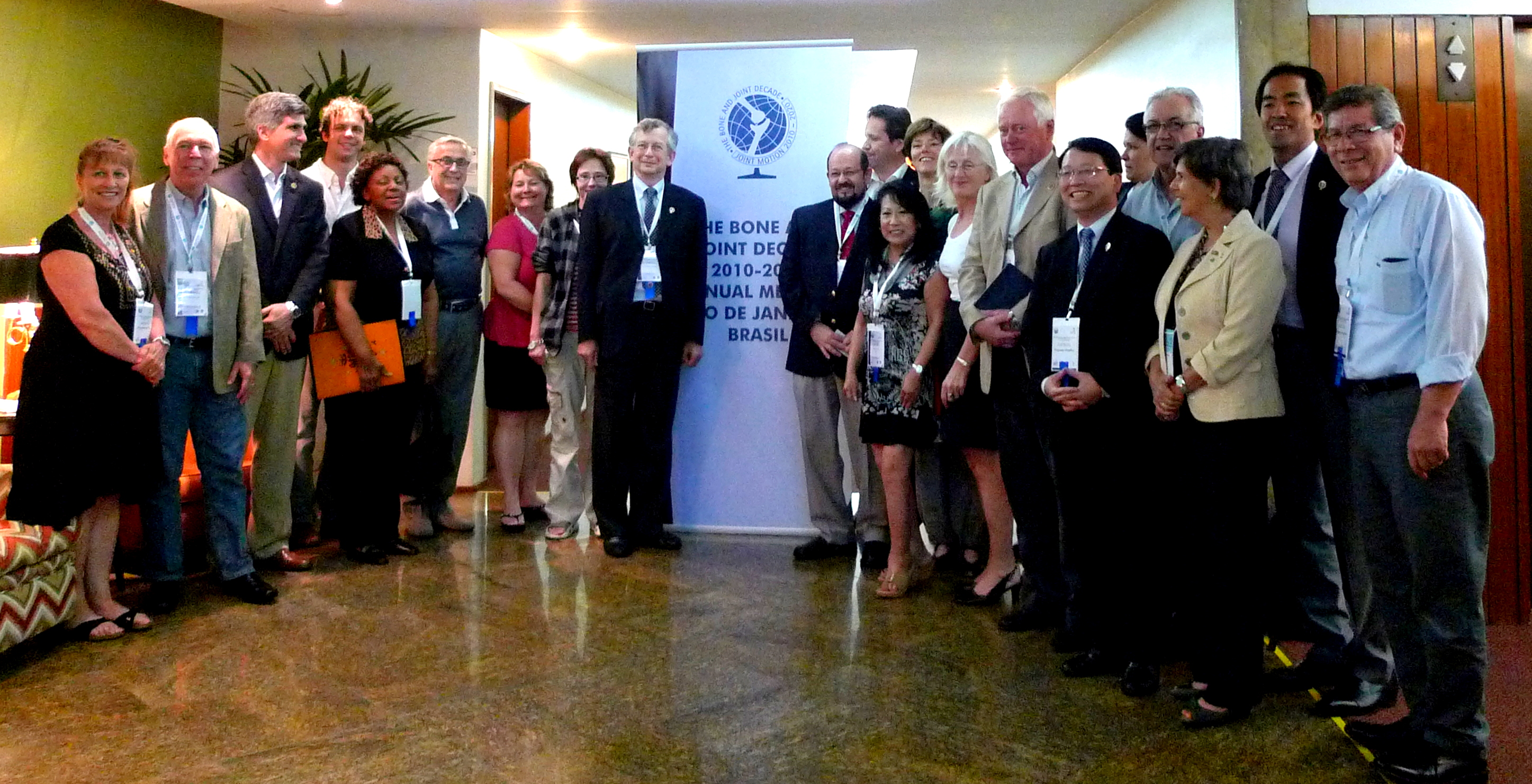BJD World Network Conference 2013, Rio de Janerio, Brazil
Bone and Joint Decade World Network Conference
Rio de Janeiro, Brazil
11-13 July 2013
The BJD World Network Conference in Rio opened on Thursday 11th July with a presentation by Tony Woolf on “How to elevate musculoskeletal conditions and injuries as a health priority ‐ successes and challenges”. This outlined the work currently in process by the BJD International Coordinating Council at policy level, both nationally in their own countries and worldwide in collaboration with the World Health Organisation, and the need for all communities involved in musculoskeletal health to demonstrate to their governments the enormous burden of these musculoskeletal conditions (MSKs) and escalating costs.
The Meeting of National Action Networks (NANs) took place following this and continued for the rest of the day. It opened with a session on “Musculoskeletal Health as a Priority” with presentations by Tony Woolf and Deborah Kopansky-Giles; they introduced the BJD “Advocacy Toolkit” and the NAN “How To Guide”, both documents that have been drawn up this year and that are now in their consultation stage.
Following this there was an interactive session led by Federico Moscogiuri, Director of the Arthritis & Musculoskeletal Alliance (ARMA), the organisation that represents the UK NAN and Steve Gnatz, President of the US Bone & Joint Initiative (USBJI), the organisation that represents the US NAN. They led the meeting through the following stages generating interesting debate and some useful feedback :
• Setting your regional priorities
• Developing your case statement
• Strategies for bringing people together

In the afternoon we listened to four case studies of Local Activities from the UK, Kenya, US and Lebanon, all fascinating examples of initiatives that are being rolled out across the globe by NANs.
• UK Clinical Networks Project (Federico Moscogiuri)
• Kenya Education Initiative UWEZO (Lillian Mwaniki) click here to read the full presentation
• USBJI Primary Care Engagement (Steve Gnatz)
• Creating a new collaboration – Lebanese Osteoporosis Society (Ghassan Maalouf)
Global Activities were presented by Tony Woolf on the Disability and Rehabilitation Systematic Review, a WHO project with BJD as one of the main collaborators, and by Deborah Kopansky-Giles on Bone & Joint Action Week which takes place in October each year. The session closed with a Call to Global Action, highlighting the need for all NANs to raise priority for MSK disease and injuries with their governments at both the national and international level.
 On Friday 12th the BJD held two symposia in collaboration with their partners. The first of these was a BJD/Fit for Work (FFW) Symposium, “Musculoskeletal Health in the Workplace”, considering amongst other topics the importance of enabling employers to understand their role in reducing this impact (Jack Skrolsvik, Norway); how to reduce the impact of back pain in the workplace (Deborah Kopansky-Giles, Canada); and the challenges of musculoskeletal conditions in the workplaces of Rio de Janeiro (Eduardo Branco, National Social Insurance Institute). The symposium ended with a vibrant Panel discussion on “An action plan for sustainable working lives: what is the recipe?” Our thanks go to local organisers Roger Levy and Selma Merenlender for bringing together the English and Brazilian presentations to make such an interesting programme.
On Friday 12th the BJD held two symposia in collaboration with their partners. The first of these was a BJD/Fit for Work (FFW) Symposium, “Musculoskeletal Health in the Workplace”, considering amongst other topics the importance of enabling employers to understand their role in reducing this impact (Jack Skrolsvik, Norway); how to reduce the impact of back pain in the workplace (Deborah Kopansky-Giles, Canada); and the challenges of musculoskeletal conditions in the workplaces of Rio de Janeiro (Eduardo Branco, National Social Insurance Institute). The symposium ended with a vibrant Panel discussion on “An action plan for sustainable working lives: what is the recipe?” Our thanks go to local organisers Roger Levy and Selma Merenlender for bringing together the English and Brazilian presentations to make such an interesting programme.
The second, a BJD/Fragility Fracture Network Symposium (FFN), was devoted to topics relating to an Epidemiological Update on Fragility Fracture, Surgical Challenges in Fragility Fractures and Fragility Fracture Medical Care; the symposium finished with a Round Table: “When and Why Use Each Medication”. We are most grateful to members of the Scientific and Organising Committee, in particular David Marsh (UK), Adriana Machado (Brazil), Marcos Musafir (Brazil) and Bernardo Stolnick (Brazil) for their time and effort that resulted in an interesting and successful meeting.
The two symposia were well attended by both BJD members and local delegates. Some presentations were delivered in Portuguese, most in English, all were stimulating and thought provoking, generating much discussion and debate in both languages!
The BJD met with members of the Executive of the Society for Latin American Orthopedics and Traumatologists (SLAOT) for a Summit Meeting and we are grateful to their President Dr Jose Sergio Franco for allowing us some time during their Council Meeting to present the aims, objectives and goals of the BJD. These were well received and we are hopeful that the BJD will be able to form a Regional Network in Latin America and that NANs will begin to form in the area under their guidance.
On Saturday 13th July there was a morning session for the NANs on a Call for Action, for NANs to use the Advocacy Toolkit and the NAN How To Guide in the bid to raise priority for MSKs to policy makers with national or international initiatives: a Joint Campaign across the globe relevant to each country’s needs and supported by BJD International.
We would like to thank Professor Marcos Musafir for his generous hosting of this Conference; we were made very welcome with excellent accommodation for our meetings and a Gala Dinner on Friday night at the Museum of Modern Art.


